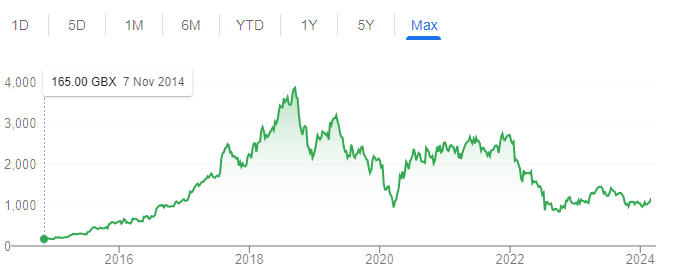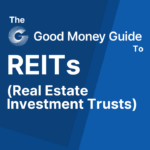The Alternative Investment Market (AIM) hosts junior companies on the London Stock Exchange. Its main function is to provide a listing before companies grow and migrate to a main listing. In this guide, we cover how to buy AIM shares, what the AIM market is and some of the best AIM shares to follow.
What is the AIM stock market?
AIM was set up in 1995 to promote investments in risky corporate ventures. Because of its less onerous listing requirements, many new startups choose to list there. Liquidity has grown as AIM shares can be included in stocks and shares ISAs, making them attractive tax-wise.
- Related guide: Compare the best stocks and shares ISA accounts
According to the latest statistics (Jan 2024) from the FTSE AIM all-share index, AIM currently has 744 firms (down from a peak of 1,694 in 2007) with an overall market capitalisation of £77bn (down from £104 billion in Mar 2019). But even though the amount of companies and overall value is falling, it is still a stock market worth investing in.
How to buy AIM shares
To buy AIM shares you need a stock broker that provides access to smaller-cap shares. These are what we think are some of the best stock brokers for investing in AIM stocks and why:
- Hargreaves Lansdown – excellent market access, research pricing data and AIM company reports
- Interactive Investor – provide a fixed-fee investing account and access to the AIM market
- AJ Bell – a low-cost investment platform for investing in AIM shares
- IG – investing, CFD trading and financial spread betting on AIM stocks
- Spreadex – a smaller derivatives broker with great customer service for working orders in between the bid/offer spread (for more advanced larger traders).
Related guide: How to buy shares in any company from any stock market around the world.
Five things to know about buying AIM stocks:
- It’s not just small companies on AIM. There are 11 stocks (down from 15 in Dec 22) with a market capitalisation above £1 billion.
- The next rung down, with a market cap £250-1,000 billion, has 68 companies. Together these firms form the bulk of the FTSE AIM 100 Index, the equivalent of the FTSE 100 Index
- The three biggest sectors (by market cap, end-Mar) are: Financials, Industrials, and Consumer Services.
- AIM stocks can be very volatile, even the largest. But returns can be very good if timed correctly. Occasionally, you may even grab a ten-bagger.
- The spread (the difference between the buy and sell price) can be wider for AIM stocks than main market companies so consider using a limit order to get better pricing.
Best AIM stocks
One of the great things about AIM is that it lists stocks that are still in their growth phase. Some are unprofitable but with huge potential in the future. The winners of the recent Aim Awards in 2023 were:
- Belvoir Group plc: Best Investor Communication Award
- SigmaRoc plc: Best Use of AIM Award
- Oxford Metrics plc: Best Technology Award
- LBG Media plc: Diversity Champion Award
- Journeo plc: AIM Transaction of the Year Award
- Next 15 Group plc: AIM Corporate Governance Award
- Kitwave Group plc: AIM Growth Business of the Year Award
- Aurrigo International plc: Best Newcomer Award
- Marks Electrical Group plc: Entrepreneur of the Year Award (Mark Smithson)
- Alpha Group International plc: Company of the Year Award
How to choose what AIM stocks to buy
Many AIM stocks are famous household names, such as ASOS (ASC), Fevertree Drinks (FEVR) and Boohoo (LON:BOO). However, some of the best returns can be found when investing in yet unknow companies. Here’s how you can sniff out potential investments on AIM:
- Decide what Aim stock you want to invest in: The first thing one needs to do is to get a list of all AIM stocks currently trading in the market. You can get this information for free from the LSE website (here).
- The next step is to filter stocks based on your investing criteria, such as market capitalisation, recent returns, or by sector. Many prefer to start from market capitalisation, that is, picking the top 100 AIM stocks by market capitalisation. Liquidity is good for these larger stocks.
- After that, you construct a watchlist. The number of stocks in this list should not exceed 30 as you will struggle to research them properly. Next, find out more about these companies in the watchlist – including their activities, profitability, and peers’ performance. Lastly, you invest only when you feel the stock has satisfied all your conditions.
The “Risk-Reward” for buying AIM stocks
AIM stocks are just like main market shares, albeit smaller. So they retain one key characteristic of a stock, namely, volatility. Prices could go up 200% and down 60% over a short period of time. But AIM stocks have one great factor going for them: Growth.
These AIM-listed firms are often young, dynamic, and fast-growing. Take Fevertree Drinks, the leading supplier of premium carbonated mixers. The stock soared 10x over a 4-year period as sales and earnings outperformed. But more recently, it has traded far lower.

But once its growth spurt is over, you will have to trade carefully. For example, Asos grew and grew – until investor expectations are set so high that they could not be met satisfactorily. Prices collapsed by 60% in a year. Prices now are now lower than they were back in 2013 (see below).

There is a great deal of money to be made investing in AIM shares, but also a lot to lose!
So when you invest in AIM stocks, you need to emphasise growth rather than value. More importantly, you will need to diversify across sectors and stocks.
Junior stocks have always been susceptible to fads and mania – particularly mining and tech – so you need to have a clear exit plan for buying them.
The performance gap between AIM winners and losers is very wide.
In conclusion, when investing in AIM stocks, hold on to your winners for as long as possible to compound your returns. Your losers? Dump them, as quickly as possible.

Jackson is a core part of the editorial team at GoodMoneyGuide.com.
With over 15 years industry experience as a financial analyst, he brings a wealth of knowledge and expertise to our content and readers.
Previously Jackson was the director of Stockcube Research as Head of Investors Intelligence. This pivotal role involved providing market timing advice and research to some of the world’s largest institutions and hedge funds.
Jackson brings a huge amount of expertise in areas as diverse as global macroeconomic investment strategy, statistical backtesting, asset allocation, and cross-asset research.
Jackson has a PhD in Finance from Durham University and has authored nearly 200 articles for GoodMoneyGuide.com.



